The invention of the train revolutionized transportation. The train first invented in the 1800 century has been connecting distant regions and transforming the world as we know it. Trains have played a pivotal role in nations’ industrialization, commerce expansion, and society’s growth. But who can be credited with creating this remarkable mode of transportation? This article delves into the fascinating history of trains, exploring the minds and innovations that led to the train’s invention and evolution.
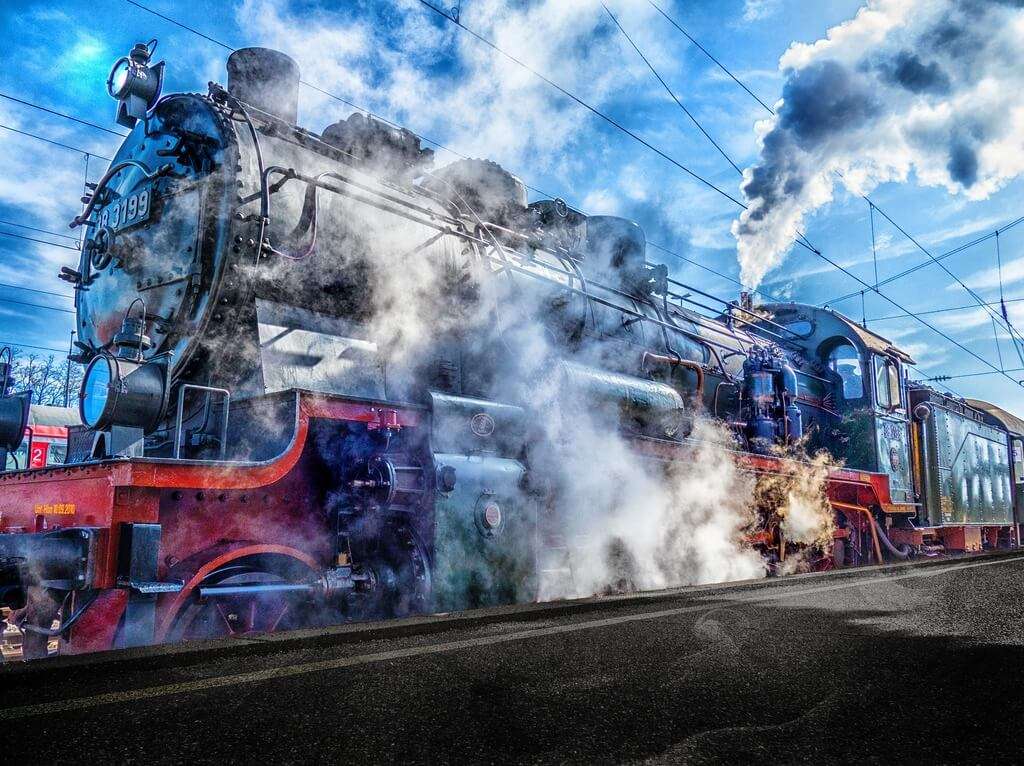
The Birth Of Steam Powered Locomotion
As we know it today, the train began its journey with the development of steam-powered locomotives. The term “train” was initially used to describe a series of carriages or wagons pulled by horses for transporting goods and people. However, the transformative moment came when the steam engine was harnessed to propel these carriages forward.
The credit for inventing the first steam-powered locomotive goes to George Stephenson, a British engineer. 1814 Stephenson designed the first successful steam locomotive, the “Blücher.” Although this locomotive was not intended for passenger travel, it marked a significant milestone in the history of rail transportation.
The Rocket’s Triumph
While George Stephenson’s “Blücher” was a notable achievement, his subsequent creation, the “Rocket,” truly revolutionized train travel. In 1829, Stephenson and his son Robert introduced the “Rocket,” a locomotive that combined several key innovations.
The “Rocket” featured a multi-tubular boiler, which improved steam generation efficiency, and a blast pipe to direct exhaust steam up the chimney, creating a draft and enhancing combustion. These innovations allowed the “Rocket” to achieve speeds of up to 29 miles per hour, setting a new standard for locomotive performance. This locomotive made the Liverpool and Manchester Railway, which opened in 1830, the world’s first fully operational passenger railway.
The success of the “Rocket” established George Stephenson as a pioneer in the field of railway engineering. His contributions laid the foundation for the rapid expansion of railways not only in the United Kingdom but also around the world.
The American Steam Locomotive
The development of the steam locomotive was not limited to the United Kingdom. Across the Atlantic, American engineers were also making significant strides in locomotive design. One of the key figures in the American railroad industry was John Stevens, an inventor and engineer. In the early 19th century, Stevens built a small steam locomotive called the “Steam Wagon.” Though not widely adopted, it demonstrated the potential of steam power for rail transportation in the United States.
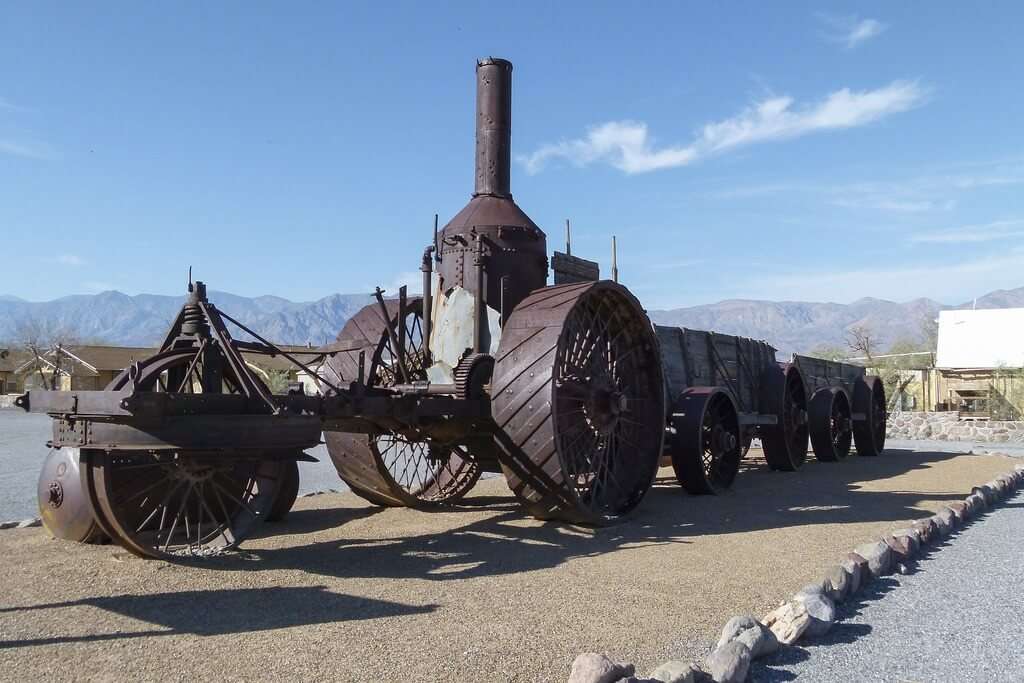
However, George Stephenson’s design influenced the development of American steam locomotives. The American locomotive industry took off in the 1830s, with manufacturers like Baldwin Locomotive Works producing steam locomotives based on Stephenson’s designs. These locomotives played a crucial role in connecting the vast expanse of the American continent, contributing to westward expansion and economic growth.
Innovations And Expansions
As the 19th century progressed, railways continued to evolve and expand. Engineers and inventors worldwide contributed to the refinement of locomotive technology and the construction of extensive railway networks. One notable innovation was the development of the “Bogie” or truck, which allowed locomotives and railcars to navigate curves more smoothly. This innovation significantly improved the safety and efficiency of railway transportation. Another critical development was the introduction of the telegraph system for communication between stations and trains. The telegraph enabled real-time coordination of train movements, enhancing safety and efficiency on the tracks.
The Transcontinental Railroad
In the United States, the construction of the First Transcontinental Railroad was a monumental achievement that brought the East and West coasts of the country closer together. The project was completed in 1869 when the Central Pacific and Union Pacific railroads met at Promontory Summit, Utah. The driving force behind the First Transcontinental Railroad was government support, private investment, and the tireless labor of thousands of workers, including Chinese immigrants and Irish laborers. The completion of this railroad not only facilitated the movement of people and goods across the continent but also symbolized the unification of a nation.
Electrification and Dieselization
The late 19th and early 20th centuries witnessed significant advancements in locomotive technology. One of the most notable changes was the shift from steam power to electric and diesel power. Electric locomotives, powered by overhead wires or a third rail, were introduced in the early 20th century. They provided smoother acceleration and reduced maintenance compared to steam locomotives, making them suitable for urban transportation systems like subways and commuter railroads. Diesel locomotives, which began to replace steam locomotives in the mid-20th century, offered even greater efficiency and versatility. Dieselization brought about cleaner and more economical rail travel while reducing the need for extensive infrastructure like water and coal facilities.
Modern High-Speed Rail
In the latter half of the 20th century, high-speed rail systems emerged as a new frontier in rail transportation. Japan’s Shinkansen, known as the “bullet train,” introduced the world to trains traveling at exceptionally high speeds. The first Shinkansen line, the Tōkaidō Shinkansen, began operation in 1964, connecting Tokyo and Osaka at up to 130 miles per hour. This marked a new era in rail travel, setting the standard for high-speed rail systems in other countries. Today, high-speed rail networks can be found in various parts of the world, including Europe and China. These systems offer a convenient, energy-efficient, and environmentally friendly mode of transportation for both domestic and international travel.
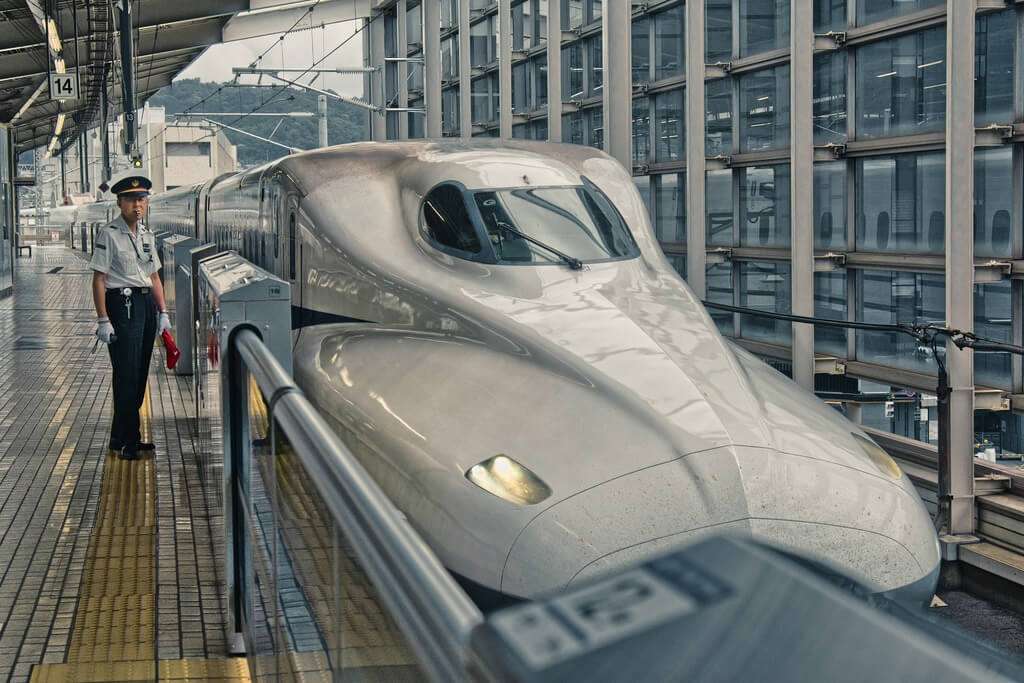
The train first invented as a steam-powered locomotive by George Stephenson, has evolved over centuries to become a cornerstone of modern transportation. From its humble beginnings in the early 19th century to today’s high-speed, electrified, and diesel-powered rail systems, trains have played a vital role in connecting people, goods, and economies across the globe. The history of trains is a testament to human ingenuity, engineering prowess, and a relentless drive to improve and innovate. As we look to the future, it’s clear that rail transportation will continue evolving, offering sustainable and efficient solutions to meet tomorrow’s transportation challenges. Whether you’re a history enthusiast or a fan of cutting-edge technology, the story of trains is a fascinating journey worth exploring.
How Trains Turn?
Trains have been a staple of transportation for centuries, connecting people, goods, and cultures across the globe. They offer a unique blend of efficiency and nostalgia, chugging along their tracks with a rhythmic cadence that has captured the imagination of many. While we often admire their straight and seamless paths, have you ever wondered how trains turn? In this article, we’ll take you on a captivating journey through the intricate mechanics of train steering, shedding light on the hidden aspects of this remarkable mode of transport.
The Invention Of The Train: A Game-changer In Transportation
Before diving into the mechanics of how trains turn, let’s briefly explore the origin of trains and their significance. The train was first invented in the early 19th century, marking a pivotal moment in transportation history. The invention of the steam locomotive, credited to George Stephenson and Richard Trevithick, transformed the way people and goods moved across vast distances. This momentous creation laid the foundation for a network of tracks that crisscrossed countries, and it continues to impact our lives today.
On Track: The Basics Of Train Movement
Trains are designed to operate on rails, a system that offers stability and control over the vehicle’s path. The wheels of a train are specifically designed to fit snugly on the tracks, preventing derailment and ensuring a smooth journey. The turning mechanisms are integral to this system, allowing trains to navigate curves and corners effectively.
Train Wheels: A Fundamental Component
A train’s ability to turn is rooted in its wheels. Unlike the wheels of a car, which pivot to change direction, train wheels are fixed in place. This may raise the question: How do trains turn if their wheels don’t pivot? The answer lies in the geometry of the tracks themselves.
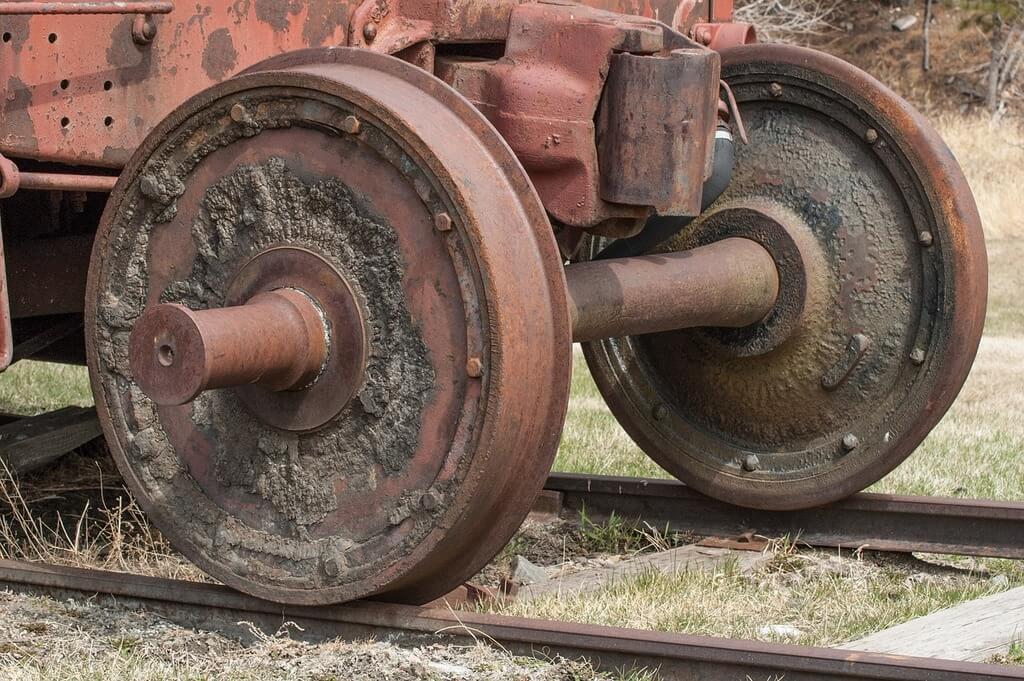
Curved Tracks: The Key To Turning
To understand how trains turn, consider the track layout. Railroad tracks are not perfectly straight; they incorporate gentle curves to facilitate changes in direction. These curved sections are essential for maneuvering, and the process of turning is largely passive on the train’s part.
As a train approaches a curve, the outer wheel travels a longer distance than the inner wheel, causing a subtle but effective turning motion. This concept, known as coning or canting, is what enables the train to navigate turns without the need for swiveling wheels. The outer wheel experiences a larger circumference, making it travel a greater distance during a revolution, while the inner wheel has a smaller circumference, resulting in a shorter distance covered.
Balancing Act: The Role Of Banking
To ensure safe and smooth turns, the tracks themselves are designed with slight banking or canting. The outer rail of a curve is elevated compared to the inner rail. This banking angle helps counteract the centrifugal force that pushes the train outward during a turn. By tilting the track in this manner, the train is naturally guided towards the inside of the curve.
The combination of the coning effect of the wheels and the banking of the tracks ensures that the train can navigate turns with stability and minimal wear and tear on both the wheels and tracks. This system is a testament to the ingenuity of train engineering.
Turning The Tables: The Role Of The Engineer
While the track layout and wheel design play a significant role in enabling trains to turn, the locomotive engineer also plays a crucial part in the process. Communication and coordination between the engineer and the train’s control systems are vital to ensuring safe turns.
The engineer must anticipate upcoming curves and make adjustments to the train’s speed and braking systems accordingly. This coordination helps maintain the train’s balance and stability as it navigates turns. Modern trains often feature advanced computer systems that aid engineers in these tasks, providing real-time data on track conditions and suggesting optimal speed adjustments.
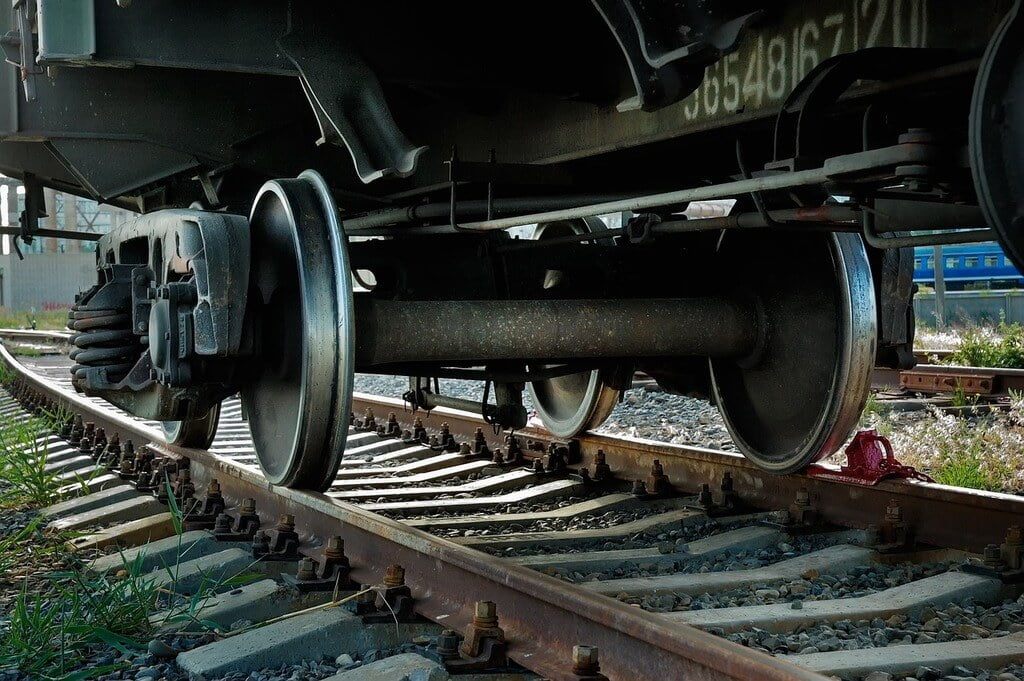
Challenges Of Sharp Turns
In some cases, especially on tracks with tight turns or in mountainous regions, the design principles of banking and wheel coning may not be sufficient. Trains encountering sharp turns require additional engineering solutions to navigate safely. One common approach involves the use of articulated trains.
Articulated Trains: The Flexible Solution
Articulated trains are composed of multiple segments connected by flexible joints. These joints allow the train to bend and flex in response to sharp curves, reducing the risk of derailment. Each segment has its own set of wheels, and as the train bends, the wheels on the inside of the curve move along a shorter path while the wheels on the outside of the curve travel a longer path, akin to the basic principle of wheel coming.
These trains are especially common in mountainous regions, where the terrain necessitates tight turns and steep grades. The flexibility of articulated trains ensures that they can navigate these challenging tracks safely and efficiently.
A Historical Perspective: Turntables And Roundhouses
Before the advent of articulated trains and advanced engineering, turntables, and roundhouses were used to turn locomotives around. A turntable was essentially a rotating platform that allowed a locomotive to be physically turned 180 degrees to face the opposite direction. Roundhouses were circular structures with multiple bays where locomotives could be stored and turned using the turntable. These historical relics showcase the inventive solutions that engineers devised to address the challenge of turning trains.
Trains are marvels of engineering that have significantly shaped our world. Their ability to navigate turns, despite the fixed nature of their wheels, is a testament to the ingenuity of the engineers who have designed them. From the invention of the steam locomotive to the modern articulated trains, the evolution of train technology continues to push the boundaries of what is possible in transportation.
The next time you see a train gracefully gliding through a curve, remember the intricate mechanics that allow it to turn seamlessly. The train’s fixed wheels, coning effect, and track banking work in harmony to make those gentle curves possible, connecting people, goods, and cultures across the globe. The train was first invented in the early 19th century, and its legacy lives on, not only in the history books but also in the vast network of tracks that crisscross our world, facilitating the flow of commerce and the exploration of new horizons. So, the next time you hear the rhythmic cadence of a passing train, you’ll have a deeper appreciation for how it turns, making this iconic mode of transportation all the more fascinating.
Can Trains Reverse?
Trains, known for their forward movement along vast networks of tracks, often prompt the question: Can trains reverse? The complexities of turning a train in the opposite direction on the tracks might seem puzzling at first glance, but this maneuverability is a crucial aspect of rail transportation. In this article, we’ll delve into the mechanics and methods that enable trains to reverse, shedding light on the fascinating techniques used in the world of locomotives.
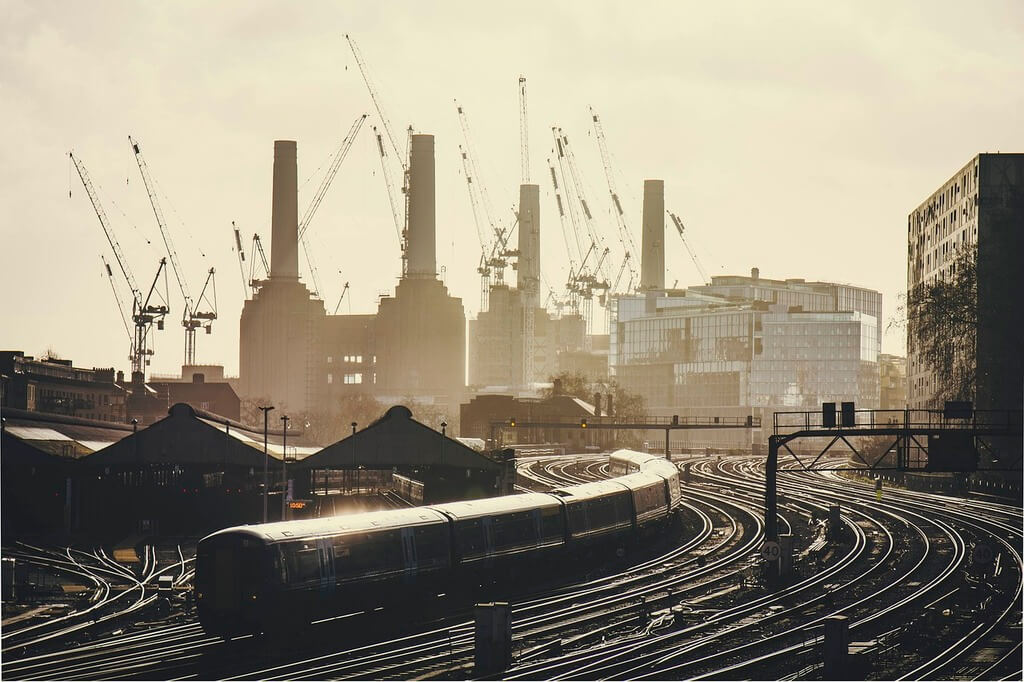
The Invention Of The Train: A Revolution In Transportation
The train was first invented in the early 19th century, marking a significant turning point in the history of transportation. The development of the steam locomotive by pioneers like George Stephenson and Richard Trevithick revolutionized the way people and goods moved across vast distances. The ability to move forward on tracks efficiently and reliably became the hallmark of the train’s design.
Forward, Yes – But What About Reversing?
While the primary function of a train involves moving forward along the tracks, there are instances where reversing becomes necessary. Reversing a train involves a distinct set of challenges compared to other modes of transportation like cars or trucks. Unlike vehicles with steering wheels, trains don’t have the luxury of rotating wheels or the capability to simply reverse in the same way. The absence of a steering mechanism and the fixed nature of train wheels present a unique puzzle when it comes to reversing.
Turning The Train Around: The Role Of Yards And Turntables
Historically, before the advent of sophisticated technology, reversing a train often involved turntables and rail yards. Turntables were large rotating platforms positioned at the end of the tracks or within rail yards. The locomotive would be carefully maneuvered onto the turntable, which would then rotate, allowing the train to face the opposite direction. This method was especially common in the early days of rail travel and was vital for navigating tracks with dead ends or limited space for turning around.
Railyards were essential hubs where trains could be stored, sorted, and reversed. The design of rail yards facilitated the movement of trains in different directions by providing multiple tracks, turntables, and other equipment needed for reversing locomotives.
Modern Methods: Shunting And Push-pull Operations
In contemporary rail operations, various methods are employed to enable trains to reverse efficiently. Shunting, a term used in the rail industry, involves the use of specialized locomotives known as shunters or switchers. These smaller, more agile locomotives help to move train cars between different tracks and sidings. Shunters can detach from one end of the train, move to the other end, and reattach in the opposite direction, facilitating the reversal process.
Push-pull operations are another common method employed to enable trains to reverse. This approach involves the use of locomotives at both ends of the train. Instead of turning the train around physically, the locomotive at the rear pushes while the locomotive at the front pulls, allowing the train to move in reverse. This method is often used in commuter trains and certain regional services, eliminating the need for turning facilities and enabling faster and more efficient reversals.
Bi-Directional Train Designs
Certain modern trains are purposefully designed to operate in both directions, eliminating the need for physically reversing the locomotive. These bi-directional trains have control cabs at both ends, enabling the driver to operate the train in either direction without having to physically turn the locomotive around. This design is especially common in high-speed and commuter train services, reducing turnaround times and improving overall operational efficiency.
Advanced Technology: The Role Of Driver Assistance Systems
The advent of advanced technology has significantly transformed the way trains operate and reverse. Driver assistance systems, similar to those found in modern cars, aid train operators in safely reversing the locomotive. These systems provide real-time data, including track conditions, speed limits, and proximity alerts, enabling operators to maneuver the train in reverse more effectively.
Challenges Of Reversing: Safety And Operational Considerations
Reversing a train, while necessary in certain situations, poses unique challenges. Safety is a paramount concern when reversing a train, as visibility might be limited for the driver when traveling in reverse. Special precautions, such as additional signaling, mirrors, and communication systems, are often employed to ensure safe reversing operations.
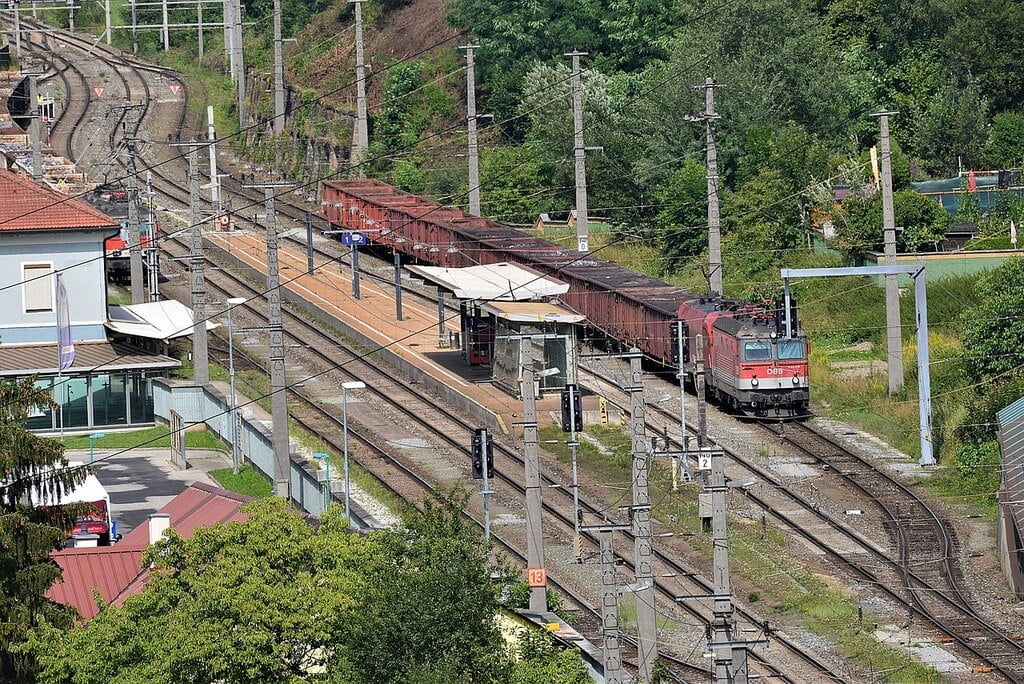
Operational considerations also play a crucial role. Reversing a train can be time-consuming and impact schedules, especially in stations or terminals without efficient turning facilities. Modern transportation networks are designed with these considerations in mind, aiming to streamline the reversing process and minimize disruptions to the overall train schedule.
Final Thoughts
The ability for trains to reverse is a pivotal aspect of rail transportation. While the fixed nature of train wheels presents a challenge, innovative methods, historical practices, and advanced technology have enabled efficient reversing operations in the modern railway industry. The train was first invented in the early 19th century, and its evolution, including the methods to reverse, continues to shape the way people and goods are transported across the world.
As we witness the seamless forward and reverse movements of trains in our daily lives, it’s a testament to the ingenuity and adaptability of the engineers and operators who have continually improved and refined the methods for reversing these iconic modes of transportation. From turntables and shunting to advanced driver assistance systems, the ability for trains to reverse is a fascinating aspect of their operational capabilities, making the intricate world of railways all the more compelling.
Also Read: When Was The Steam Engine Invented?
